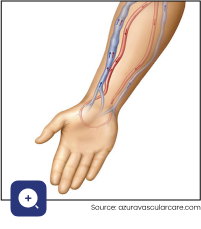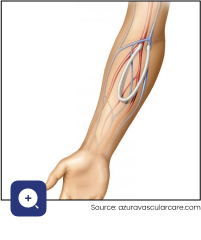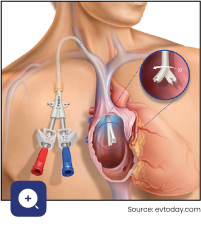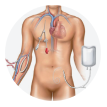
The Basics
Why is it done?
Vascular access surgery is required in patients who have end-stage chronic kidney disease. In these patients, the kidneys are no longer able to filter the blood, remove harmful substances, or control the amount of fluid in the body.
Dialysis machines keep these patients alive by performing the role of the kidneys – filtering out harmful substances and controlling fluid volume. Vascular access surgery creates a method to connect a patient to the dialysis machine.
What does it involve?
The different methods include:
- Arteriovenous fistula: a direct connection between a high-pressure artery and a low-pressure vein in your arm.
- Arteriovenous graft: a synthetic tube (made from Polytetrafluoroethylene (PTFE) or Gore-Tex) connects an artery and vein in your arm and is tunnelled superficially under the skin to allow it to be easily needled by the dialysis unit staff.
- Permcath: a specialized catheter placed via the main draining vein in the neck or groin, with the tip located in the heart.
How do you prepare for vascular access surgery?
Before the procedure itself, you will meet with the surgeon to plan where the access will be created. This involves a history and examination, followed by an ultrasound scan of the blood vessels in your arm to determine the suitability of the arteries and the veins for the creation of a fistula or graft. There needs to be good inflow in the arteries and a healthy vein with no narrowing or blockages and superficial and big enough (at least 2.5 mm) to ensure it will mature (become big and strong enough to be able to be needled for dialysis).
At Cape Town Vascular, our specialist vascular surgeons work in collaboration with other essential members of your treatment team, such as your nephrologist, to determine the best vascular access for your dialysis.
Symptoms | Causes
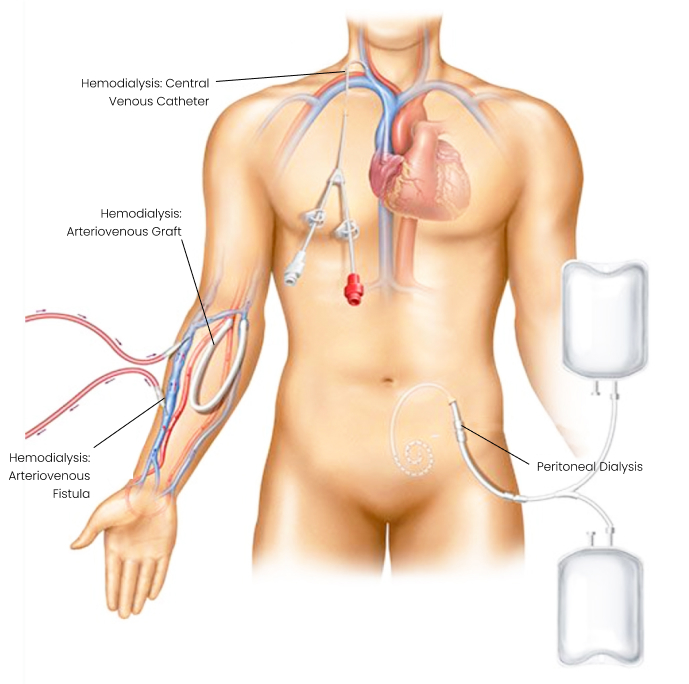
Types of Dialysis
Generally, CVCs are more likely to become infected than fistulas or grafts. [i] CVCs are partly internal with the tip of the catheter resting in the right atrium of your heart. The catheter and its limbs used to access your blood remain external. The tip of a PD catheter rests deep in your abdomen and like the CVC, there is a portion of the catheter that remains external.
Source: azuravascularcare.com

